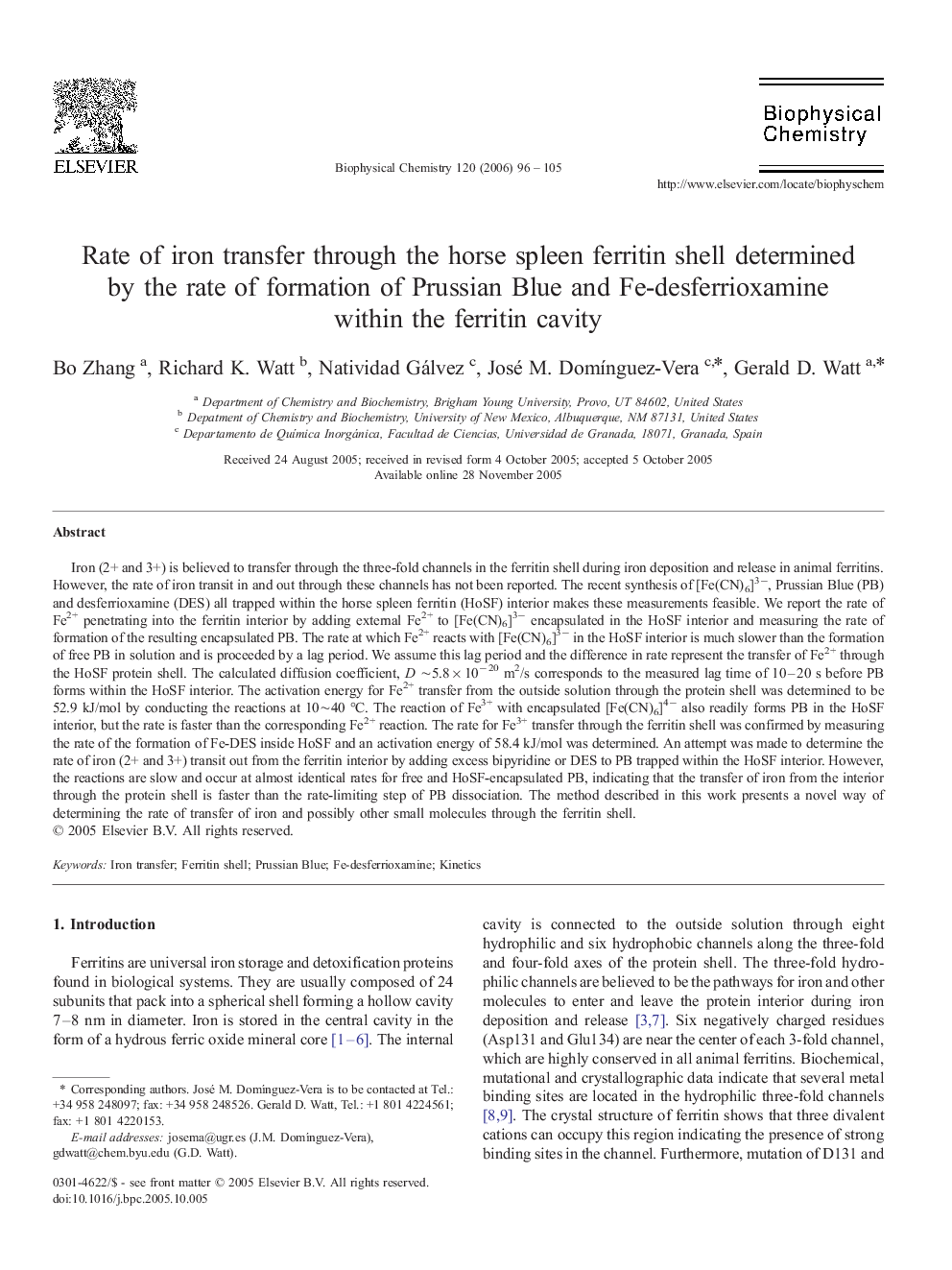| کد مقاله | کد نشریه | سال انتشار | مقاله انگلیسی | نسخه تمام متن |
|---|---|---|---|---|
| 5372498 | 1388885 | 2006 | 10 صفحه PDF | دانلود رایگان |

Iron (2+ and 3+) is believed to transfer through the three-fold channels in the ferritin shell during iron deposition and release in animal ferritins. However, the rate of iron transit in and out through these channels has not been reported. The recent synthesis of [Fe(CN)6]3â, Prussian Blue (PB) and desferrioxamine (DES) all trapped within the horse spleen ferritin (HoSF) interior makes these measurements feasible. We report the rate of Fe2+ penetrating into the ferritin interior by adding external Fe2+ to [Fe(CN)6]3â encapsulated in the HoSF interior and measuring the rate of formation of the resulting encapsulated PB. The rate at which Fe2+ reacts with [Fe(CN)6]3â in the HoSF interior is much slower than the formation of free PB in solution and is proceeded by a lag period. We assume this lag period and the difference in rate represent the transfer of Fe2+ through the HoSF protein shell. The calculated diffusion coefficient, D â¼5.8 Ã 10â 20 m2/s corresponds to the measured lag time of 10-20 s before PB forms within the HoSF interior. The activation energy for Fe2+ transfer from the outside solution through the protein shell was determined to be 52.9 kJ/mol by conducting the reactions at 10â¼40 °C. The reaction of Fe3+ with encapsulated [Fe(CN)6]4â also readily forms PB in the HoSF interior, but the rate is faster than the corresponding Fe2+ reaction. The rate for Fe3+ transfer through the ferritin shell was confirmed by measuring the rate of the formation of Fe-DES inside HoSF and an activation energy of 58.4 kJ/mol was determined. An attempt was made to determine the rate of iron (2+ and 3+) transit out from the ferritin interior by adding excess bipyridine or DES to PB trapped within the HoSF interior. However, the reactions are slow and occur at almost identical rates for free and HoSF-encapsulated PB, indicating that the transfer of iron from the interior through the protein shell is faster than the rate-limiting step of PB dissociation. The method described in this work presents a novel way of determining the rate of transfer of iron and possibly other small molecules through the ferritin shell.
Journal: Biophysical Chemistry - Volume 120, Issue 2, 20 March 2006, Pages 96-105